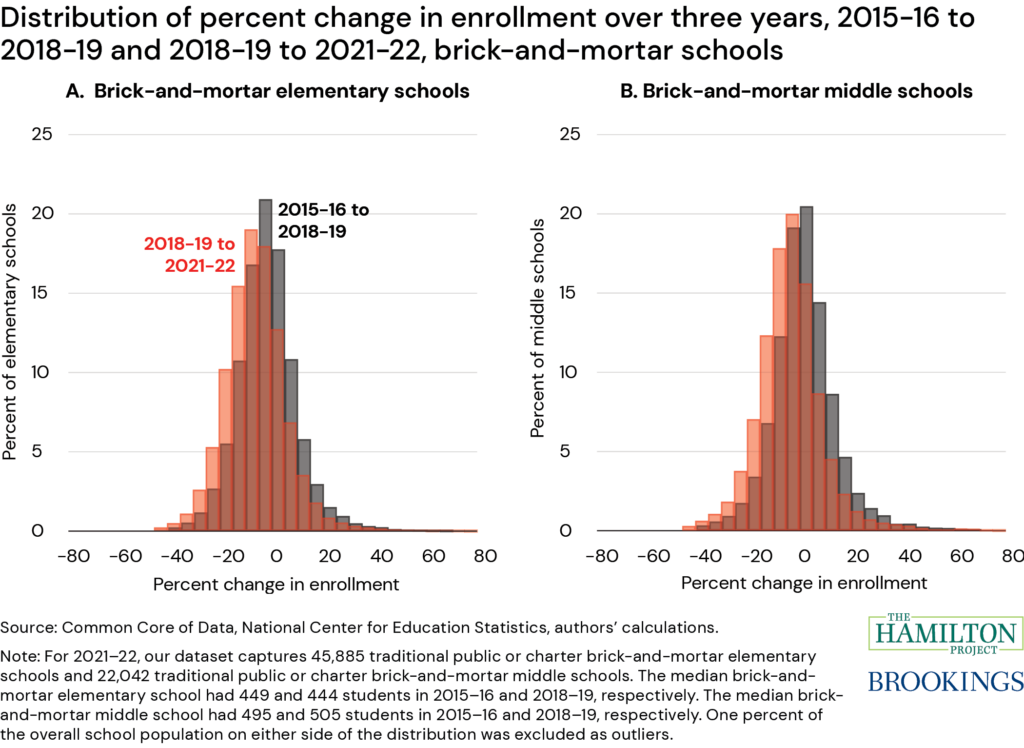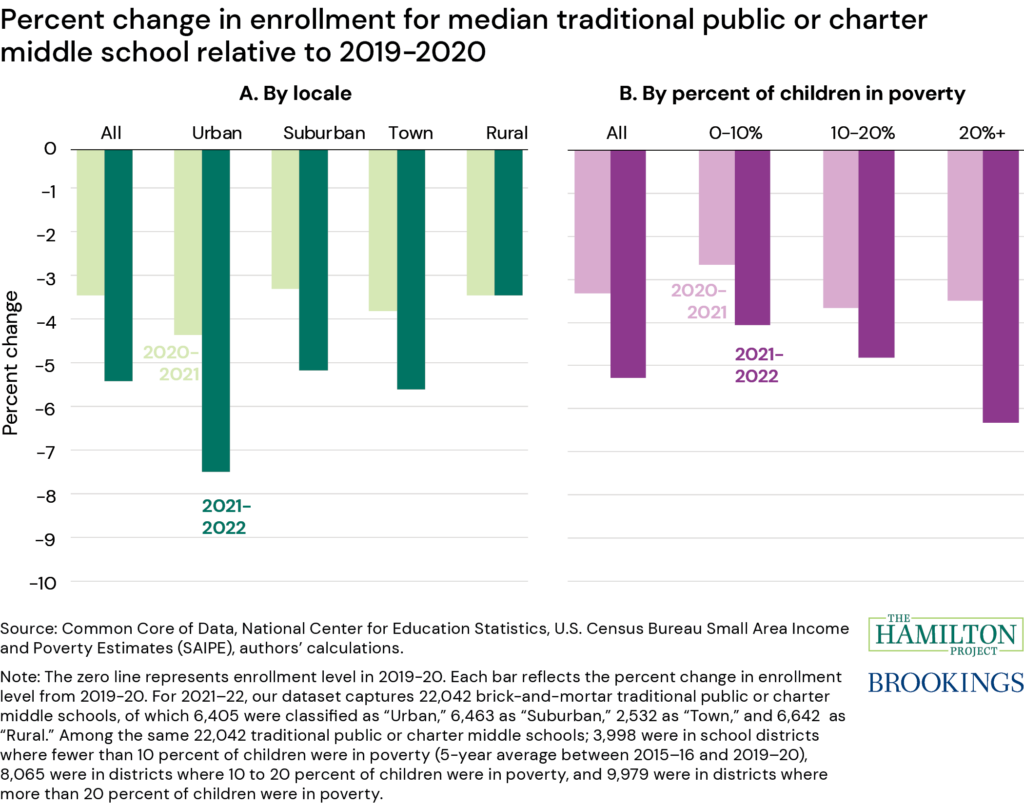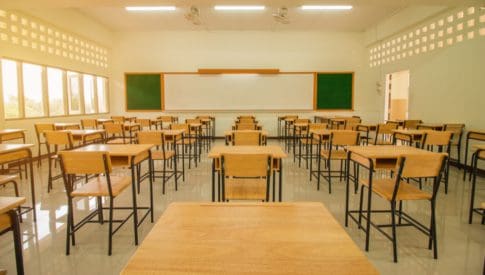The COVID-19 pandemic has had dramatic effects on the learning experiences and academic performance of children as well as on parents, teachers, and schools. Recent investigations have documented large declines in K-12 student enrollment in public schools at the state and district levels after the COVID-19 pandemic (Dee and Murphy 2021, Musaddiq et al. 2022, Dee 2023). However, state- or district-level evidence on enrollment declines may obscure how these losses vary for different types of public schools, such as by grade level and by the characteristics of the community. As more post-pandemic data are reported, a clearer picture of the nationwide declines and their implications for students and public school systems emerges.
In this paper, we investigate how student enrollment in public schools is different after the COVID-19 pandemic. Our study goes beyond some of the previous explorations in four important ways. First, we use U.S. Census Bureau data to estimate the number of school-age children in each district and infer the number of students not attending public school prior to and after COVID-19. Second, we document the enrollment trajectories in typical (i.e., median) schools in each grade level, locale, and socioeconomic status. Third, we show variation in enrollment changes across schools by looking at the distribution of enrollment changes during the pandemic. Finally, we compare the distribution of enrollment changes during COVID-19 to those from the pre-pandemic years to infer typical and extraordinary enrollment declines.

We find that there were substantial declines in public school enrollment during the COVID-19 pandemic (2020-21 and 2021-22 school years). Over the pandemic—between the 2018-19 and 2021-22 school years—about 12 percent of public elementary schools and 9 percent of middle schools experienced such a decline. This is a significant change from before the pandemic, when about 5 percent of middle and elementary schools saw a 20 percent decline between 2015-16 and 2018-19. Enrollment declines are widespread but differ substantially across types of schools, locales, and socioeconomic status. The analysis finds that urban districts and high-poverty districts saw larger declines in school enrollment.

Declining enrollment will impact children, schools, and communities. With little oversight outside of the public school system, it is difficult to know whether these students are receiving quality education. Enrollment declines may also pose budgetary and organizational challenges for schools, potentially resulting in layoffs or closures. Our results can be used as evidence in discussing and designing effective policy initiatives and avenues for further research. Important questions, including where the missing students are and whether their learning experiences match the learning experiences of students in the public school sector, remain open.




